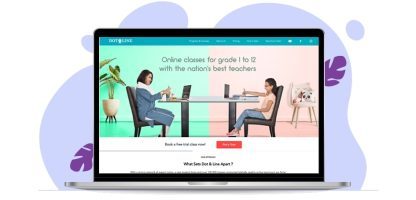Organizations need employees who can adapt quickly and work well in a rapidly changing environment in today’s competitive marketplace. Digital learning platforms provide the same kind of knowledge required for people to perform their jobs while also helping them improve skills necessary for success within an organization or business setting and developing high-level cognitive abilities such as training workers with dementia.
Individuals’ impact dramatically depends on what type they choose – whether video conferencing software like Zoom Video Meeting (Zoom), audio workshops through Podcasts shown at your convenience via downloadable files off sites like iTunes U.
How to Build Content for eLearning?
The Content you create for eLearning courses can be a crucial player in the success of your program. It should serve as an effective tool to help learners achieve their goals, but only if it is well thought out and follows specific guidelines from start to finish!
A good strategy will use planning tools that identify topics or areas needing attention, so one knows what they are working with before designing any lessons. These same types also allow users to target audiences – those who have specific skills required at each stage–and determine user knowledge prerequisite requirements necessary by students before learning how something new through interactive activities, which let them practice until mastery has been achieved.
Defining The Audience
Developing learning objectives is a vital part of teaching. Without them, there wouldn’t be much for learners to guide them through the course and ensure they learn from your lessons as well as being able to assess whether or not someone has learned what you were going over in theory before giving feedback with specific details on how each thing should have been better understood by those who took it after finishing rather than just saying “good job.”
A goal can also serve multiple purposes-from helping teach skills that will come into play later down the line while providing clarity about one’s development process!
Developing The Learning Objectives
The development of learning objectives will provide learners with knowledge and skills to learn from your course and guide their developmental process. Learners need to do something for themselves, which may involve improving an existing skill or gaining a new one!
These objectives should help them learn from your course by providing a framework within which they can work toward achieving their goals and getting better at what they are doing. These learning outcomes will allow students the knowledge and skills necessary for success in any future endeavors!
Creating The Course Design
Designing the course is an engineering feat. It’s all about balancing Content, context, and user experience to provide learners with a similar real-life experience as they would get if you took them somewhere or did something yourself!
The design of your online courses will depend on what kind – for example, video lessons might require some different considerations than written text ones do (such as managing files). However, many aspects need review when designing any type: who does it target? What medium should be used (e-learning platform)? How often can I update information without losing my audience’s interest?”
You can also consider using different delivery methods, such as PDF materials and webcasts. These will provide your learners with an interactive learning experience that is more relevant to them – which means it could help them learn better too! You might feel like they’re in a classroom where other people are taking part in this e-learning course together, for instance, because you allow remote access during live sessions between pairs or groups who need extra support from time-to date instructor response systems (ORT).
Evaluating The Learners:
To give learners a sense of accomplishment and customize the learning experience, you must evaluate their performance. You can measure this concerning what they have learned by measuring how much Content has been mastered on an assessment or quiz before giving out rewards such as certificates at graduation time, so all participants feel successful!
How to Make Online Learning and Training Interactive
To make a Custom eLearning development course more interactive, certain aspects should be considered. These include visual support for online classes and exercises that help learners better understand the topic or concept being taught. Interactive discussions can also supplement lectures through forums where they interact with one another while simultaneously learning from trainers how to do something new in real-life situations outside class hours! Games are used by providing users with fun challenges keeping them engaged at all times; Quizzes completion allows students’ progress tracking throughout their sessions which motivates some even further than others… But perhaps most importantly is creating dynamic platforms so you may provide feedback about what people have learned after finishing your program – this helps those who need extra motivation stay motivated if nothing else does because
eLearning is a process that involves the development of Content, planning for its delivery, and evaluation. It provides an organization with new skills without incurring costs when they invest in e-learning courses instead! The critical component to success in online learning or training programs like this one, then – as necessary now more than ever before because there’s increased competition from other companies vying equally hard every day against all others trying to get ahead – starts right at home: attitude towards work itself must be professional yet friendly enough so participants feel welcomed into what could potentially become lifelong relationships through continued interaction between teacher(s)




